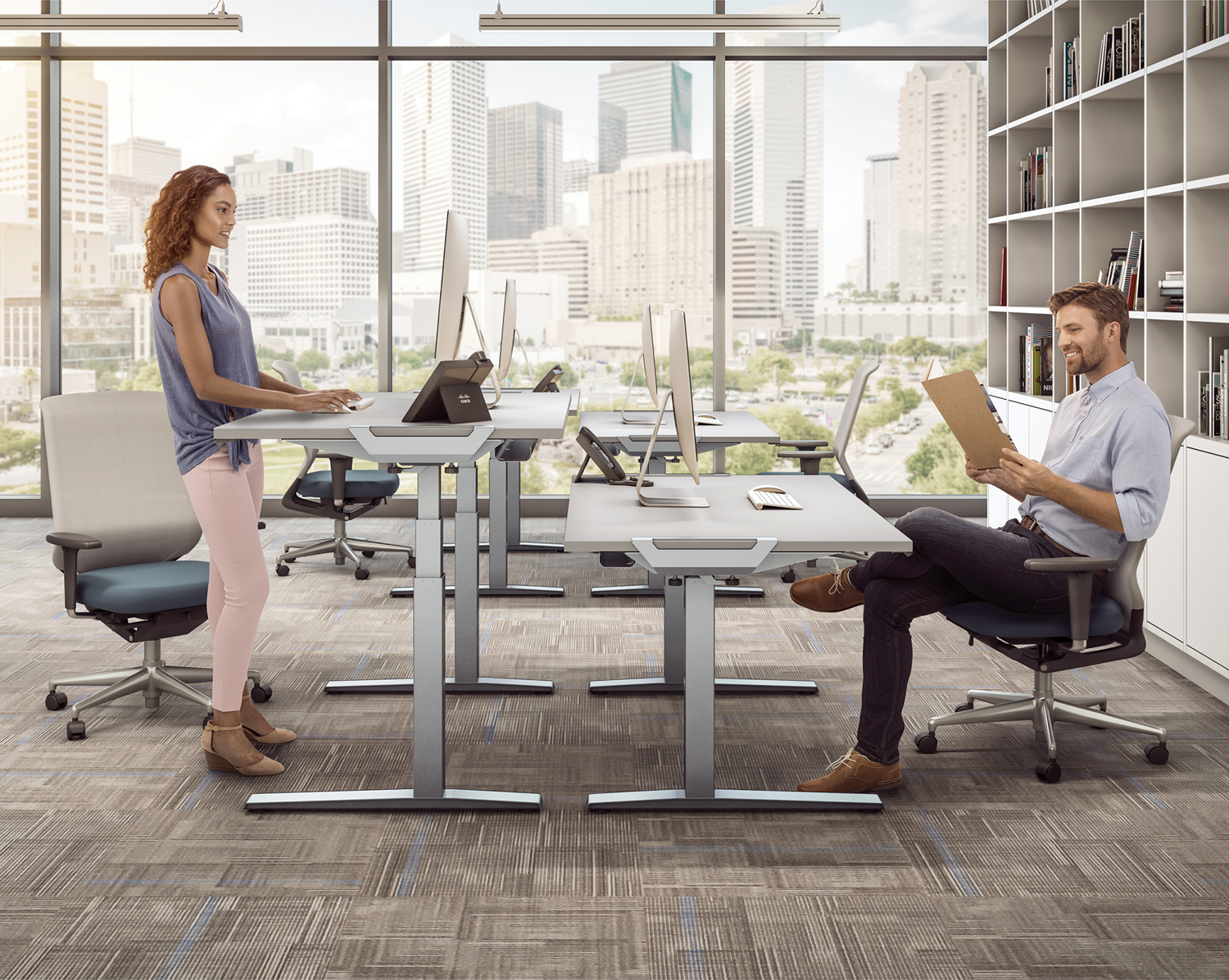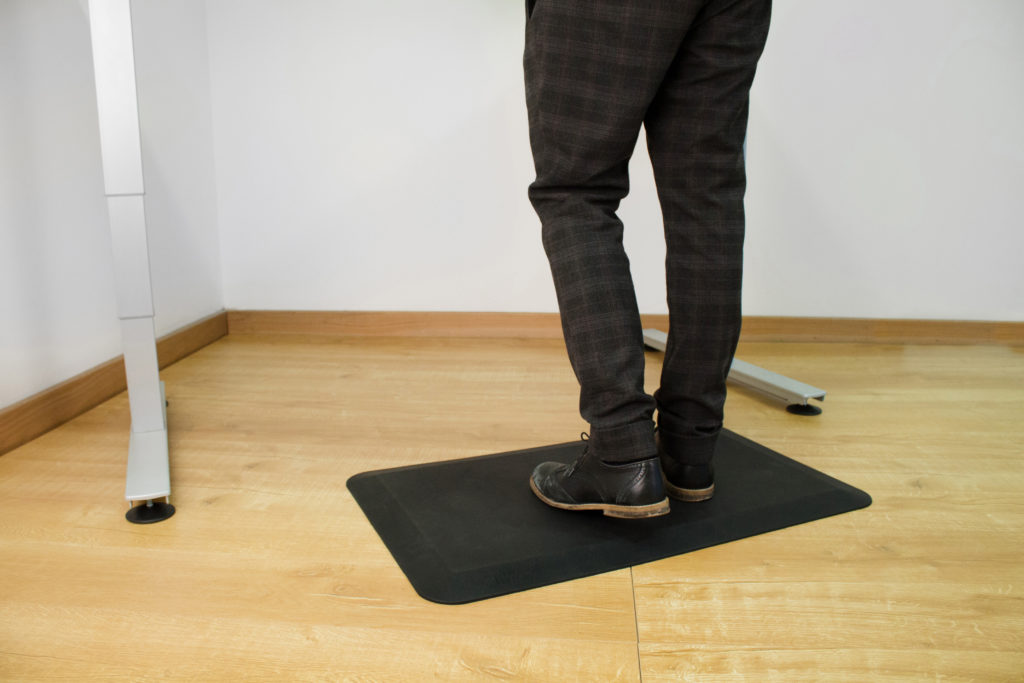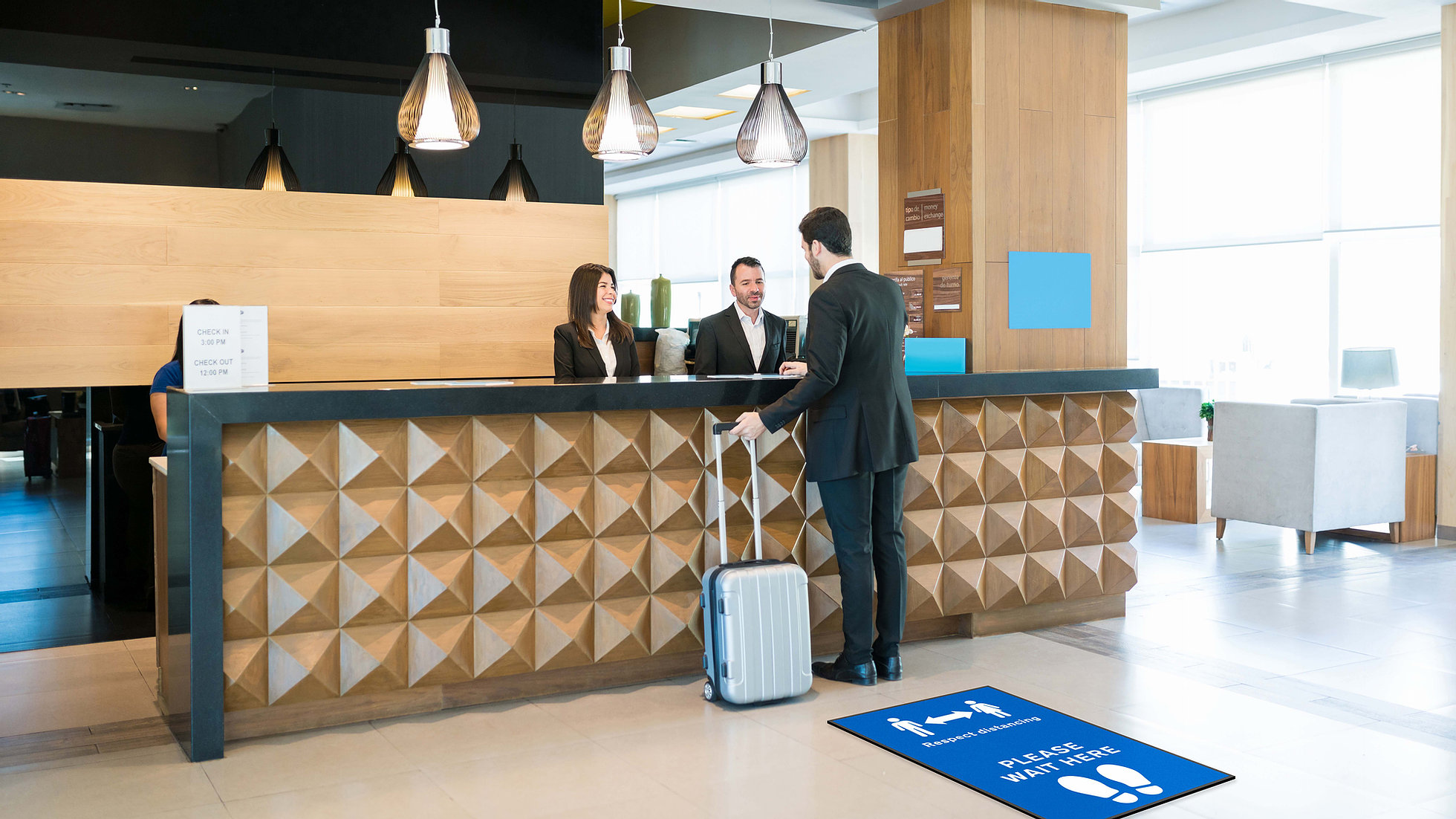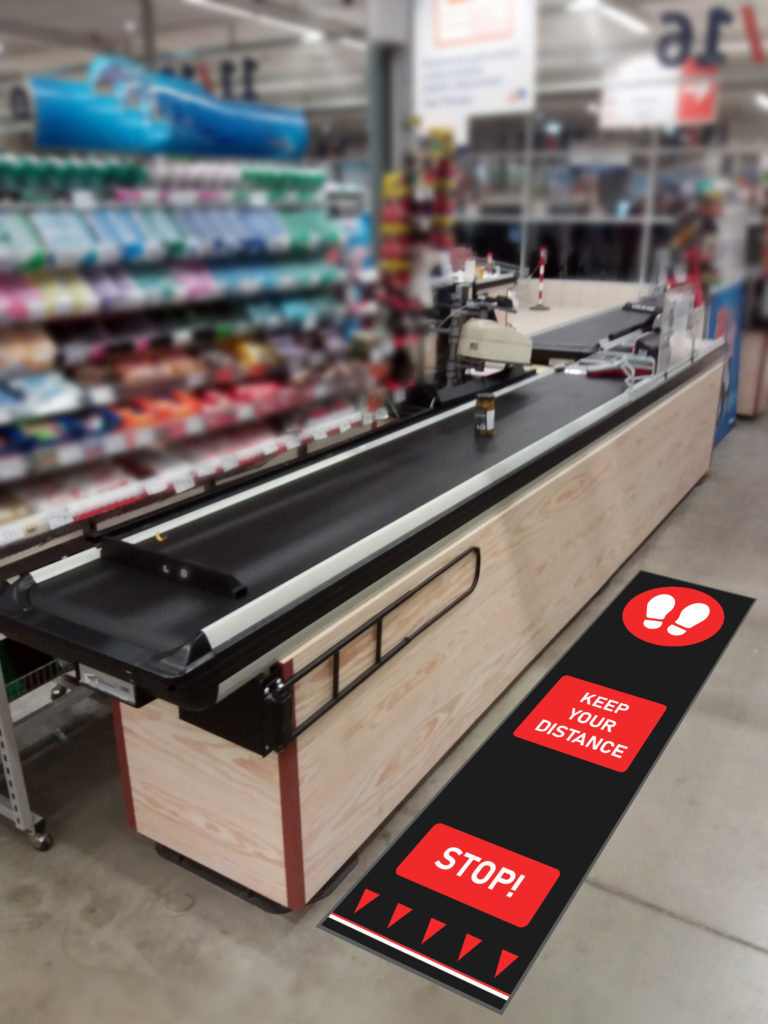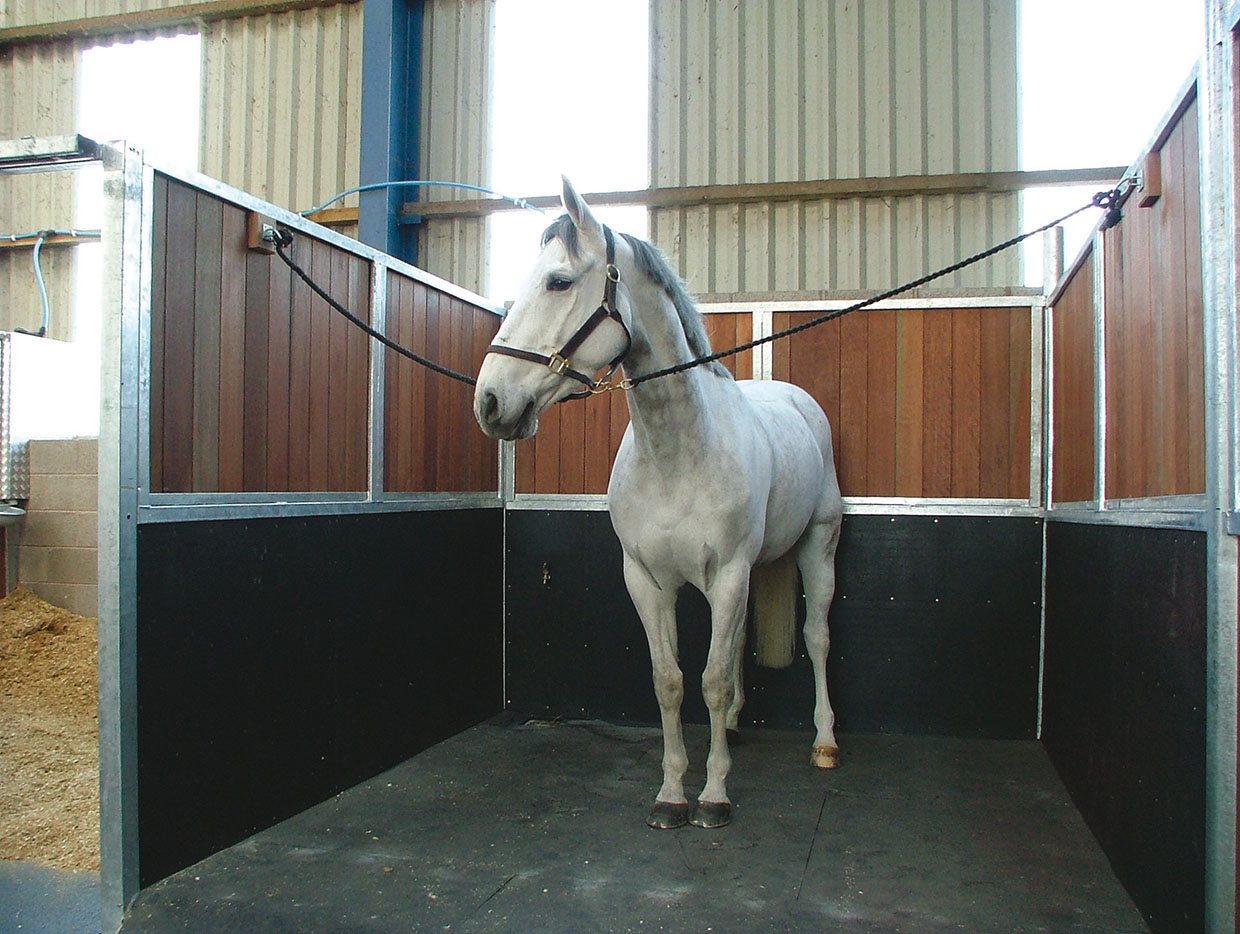Standing Vs. Sitting desks
Recently, after countless studies have taken place there has been a ‘movement’ that has led to huge debate about the best way for people to work on a day to day basis. With the majority of people in the UK working for 8 hours a day and approximately 40 hours a week, studies have been carried out to discover why sedentary working, for long periods of time, has put staff at risk of weight gain, diabetes and a knock on effect of these are heart diseases.
Many businesses and offices have made a huge change because of the results of these studies and to try and counteract the problems of having staff sitting down for long periods of time, without much movement. What they have provided is standing desks to their facilities and workspaces to encourage the workforce to stand and move around more during the day.
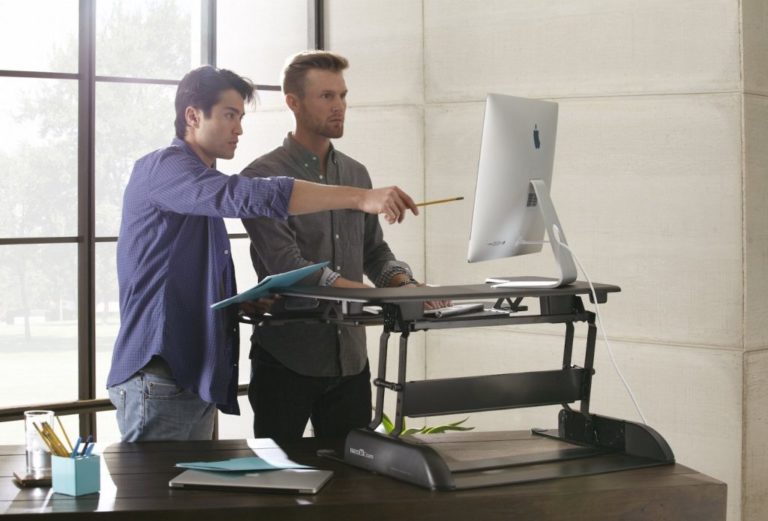
The benefits of standing desks
A clear choice in tackling the issues surrounding sitting down for long periods of time is ensuring people have the capability to stand more whilst working. Standing desks have been introduced very recently to encourage people to get up on their feet during the day and move about a bit more whilst working. There are more benefits to standing desks that we have highlighted below.
Reliefs back pain and shoulder pain
A key benefit of standing desks is that it can relieve shoulder and back problems. Large number of people who work on computers complain about shoulder and back problems and that is because sitting puts more pressure on the lower back than standing does. Usually sitting at a desk can often force the arms to be raised in unnatural angles or positions and due to them sitting in that position for long periods of time can cause a lot of pain. A standing desk helps eliminate this pain and create a better posture for the individual.
Reduces stress and improves productivity
Research has shown that standing desks also reduce stress levels, as sitting down can allow stress to accumulate in your body. Additionally, it has been made clear that concentration levels and productivity has also been improved to those that work using a standing desk and as a result of this is likely that it links to the reduction in stress levels.
Burn more calories and reduce the risk of serious health issues
Standing for long periods of time also burns more calories than sitting as you use more muscles and energy to stand in comparison to sitting. Studies have shown that standing can accumulate to burning over 50 calories more than if you were just staying seated. This energy we use to stay standing helps our bodies fend off more calories and long-term cardiovascular problems.

What are the benefits of a seated desk?
Standing desks may seem perfect due to the points stated above but in reality sitting has different health benefits associated with it as well. Again we have listed some key points below.
Takes the pressure off the lower legs and feet
Standing for prolonged periods can put serious pressure and fatigue in your lower limbs and feet. Varicose veins and blood pooling in the calves and feet are just a few of the effects you can expect if you spend too long on your feet. In more serious situations, it can even cause compression of the spine. One solution to this of course is using an anti fatigue mat to provide a cushioned surface to reduce fatigue and tiredness in the legs. Anti-fatigue mats encourage users to subtly move their feet to the cushioned surface, which encourages micromovements in the calf and leg muscles and therefore reduces fatigue. A perfect example of this mat would be the Office Orthomat Anti-Fatigue as it provides a perfect balance between cushioning and supporting the foot for users of a standing desk.
Relieves pressure on your back
Some of the aches and pains you get from working in a seated position can be simply omitted by adopting good posture. Research has found that sitting at a specific angle can relieve pressure put on your lower back during a normal working day. Positioning the feet up may contribute to better flow of blood around the body.
Standing desks are not laptop friendly
One issue with standing desks is that they don’t help their back pain when using a laptop as the arms are still in an unnatural position. This is because some standing desks are naturally optimised for the use of monitors, where a keyboard and mouse would sit much lower than the screen. This isn’t the case for most laptops, meaning the user would have to lean over the desk, rounding the shoulders again and putting more strain on the back so using a laptop in either standing or sitting position is not recommended.
Standing Vs. sitting desks
In conclusion it is best to have a balance of both standing and sitting when working at a desk for long periods of time. An adjustable sit/stand desk allows you to take advantage of the benefits of both standing and sitting desks. The body is designed to move so a mixture of both standing and sitting throughout the day would be ideal as it reduces the length of time standing on your feet but also ensures there will never be too much stress placed on the lower body. Ultimately laptops aren’t great for standing or sitting desks either as it does not create posture for the user.
